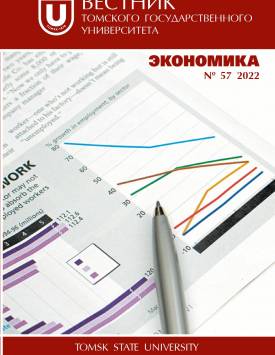The role of leadership in workplace diversity management
Although the issue of workplace diversity management has attracted the attention of many researchers and practitioners, studies on the role of leadership in workplace diversity management are still limited especially in developing nations, Nigeria inclusive. The objective of this paper is to examine the role of leadership in workplace diversity management and to contribute to the field of cross-cultural management. The paper utilizes the method of qualitative analysis and synthesis of scientific literature as it relies on secondary data collected from documentations through published and unpublished books, journal articles, and conference proceedings. It also relies on the standpoint theory that a group’s experiences create a general and permanent perspective of an immense situation, but without personal experiences one’s standpoint cannot become truly comprehensible. The paper therefore concludes that diversity management skills are required by every organization in order to harness the resources that the employees have brought to an organization. It is the active and conscious development of strategic management processes of accepting and using differences and similarities as means of adding value to an organization.
Keywords
workplace diversity,
management,
leadership role,
benefits,
challengesAuthors
| Nwani Onyeabor Chuks | Dennis Osadebay University | cijenwani@gmail.com |
| Okolie Ugo Chuks | Dennis Osadebay University | ugookolie3@gmail.com |
Всего: 2
References
Preeti, B., Poonam, L. & Ekanshi, G. (2014) Workforce diversity management: Biggest challenge or opportunity for 21st century organizations. IOSR Journal of Business and Management. 16 (4). pp. 102-107.
Benteh-Rahman, U.H.F. (2019) Diversity management and the role of leader. Open Economics. 2. pp. 30-39.
Okoro, E. (2012) Cross-cultural etiquette and communication in global business: Toward a strategic framework for managing corporate expansion.International Journal of Business and Management. 7 (16). pp. 130-139.
Stevens, R.H. & Ogunji. E. (2011) Preparing business students for multi-cultural work environment of the future: A teaching agenda.International Journal of Management. 28 (2). pp. 528-544.
Deretomode, V.F. (2012) Leadership: Principles and theoretical perpective. Lagos: Onosomegbowho Ogbinaka Publishers.
Johns, R.L., Reller, T.L. & Morphet, E.L. (1982) Educational organization and administration: Concepts, practices and issues. Prentice-Hall.
Stogdill, R.M. (1950) Leadership, membership and organization. Psychological Bulletin. 47. pp. 1-14.
Abah, E.O. (2017) Administrative and management principles, theories and practice. Paper submitted to the Department of political and Administrative Studies. Kampala International University, Uganda.
Sharma, A. (2016) Managing diversity and equality in the workplace. Cogent Business & Management. 3. pp. 1-14.
Carnevale, A.P. & Stone, S.C. (1994) Diversity beyond the golden rule. Training and Development. 48. pp. 22-39.
Rahman, U.H.F.B. (2019) Diversity management and the role of leader. Open Economics. 2 (1). pp. 30-39.
Tatlic, A.M. & Ozibilgion, S. (2002) Understand diversity: Manager’s role in organizational change. Canadian Journal of Administrative Science. 26. pp. 44-58.
Cox, T. (1991) The multicultural organization diversity. New Jersey: Pearson Education.
Allen, P. (2001) A Complex systems approach to learning in adaptive network.International Journal of Innovation Management. 5. pp. 149-180.
Cockburn, C. (1989) Equal opportunities: The short and long agenda. Industrial Relations. 20 (3). pp. 213-225.
Brooke, L. (2003) Human resource Costs and benefits maintaining a mature age workforce.International Journal of Manpower. 24 (3). pp. 260-283.
Downey, S.N. et al. (2015) The role of diversity practices and inclusion in promoting trust and employee engagement. Journal of Applied Social Psychology. 45 (1). pp. 35-44.
Simons, G.F. & Vazquez, C.I. (1993) Transcultural leadership: Empowering the diverse workforce. London: Routledge.
Kotter, J. (1990) A force of change: How leaders differ from management. New York: The Free Press.
Hekman, D.R. et al. (2017) Does diversity-valuing behavior result in diminished performance ratings for non-white and female leaders? Academy of Management Journal. 60 (2). pp. 771-797.
Frankel, A. et al. (2007) Using the communication and teamwork skills (CATS) assessment to measure health care team performance. The Joint Commission Journal on Quality and Patient Safety. 33(9). pp. 549-558.
Eisenberg, E.M., Goodall, H.I. & Trethewey, A. (2010) Organizational communication. St. Martins: Bedford Publication.
Wakk, C.I. (1995) Diverse approaches to managing diversity. Journal Applied Behavioural Science. 31. pp. 68-77.
Hersey, P. & Blanchard, O. (1977) Management of organizational communication. St. Martins: Bedford Publication.
Kreitz, P.A. (2008) Best practices for managing organizational diversity. Journal of Academic Librarianship. 34(2). pp. 101-120.
Shen, J., Chanda, A., D’Netto, B., & Monga M. (2009) Managing diversity through human resource management: An international perspective and conceptual framework. The International Journal of Human Resource Management. 20 (2). pp. 235-251.

